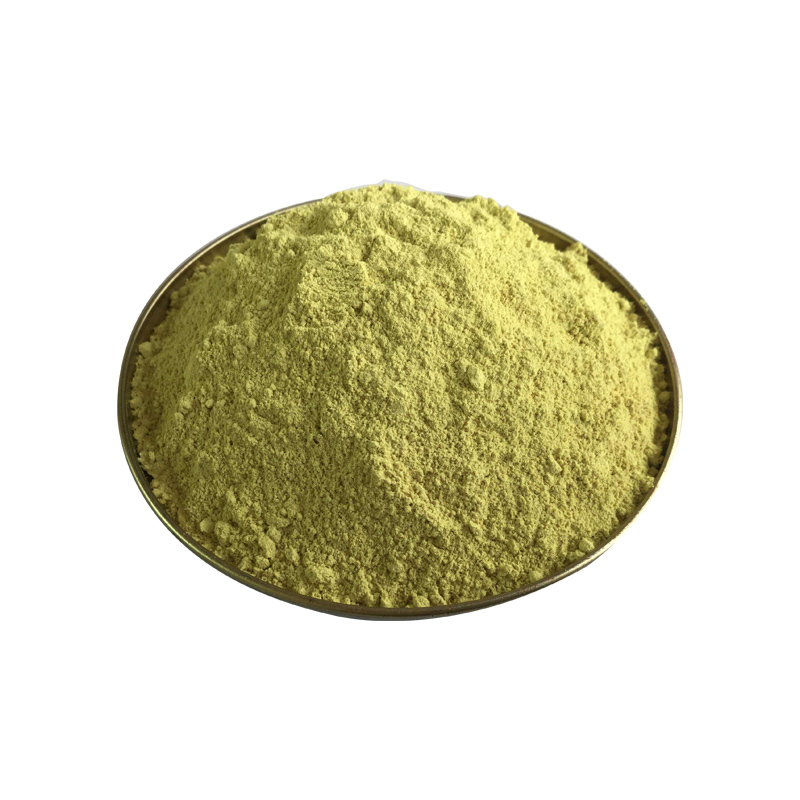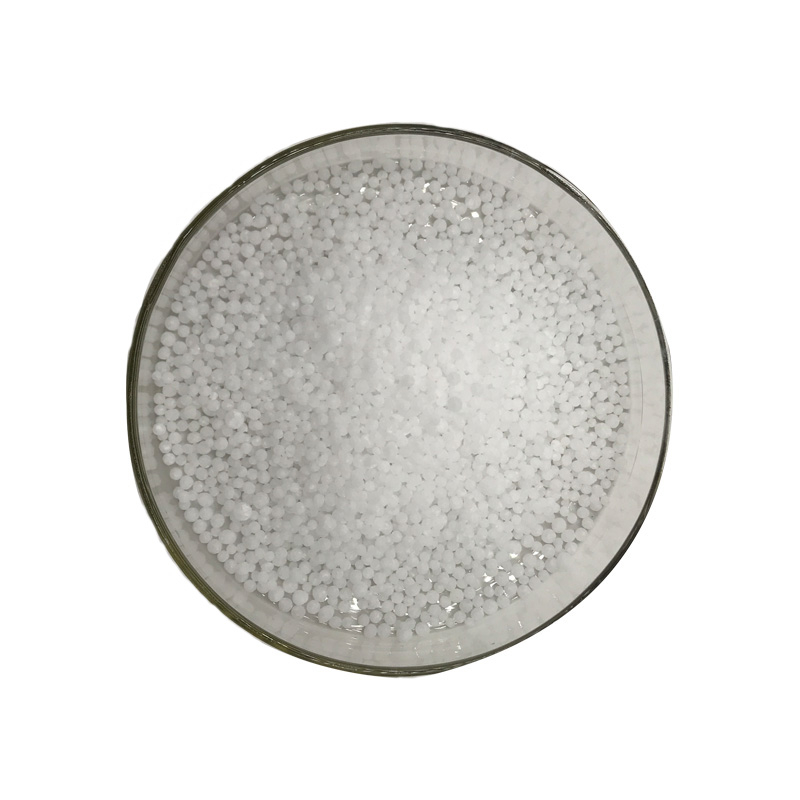Products Description of NEODYMIUM NITRATE HEXAHYDRATE CAS#16454-60-7The chemical formula of neodymium nitrate is Nd(NO3)3·6H2O. The molecular weight is 438.35. There are two variants, α and β, with a transition temperature of about 22°C. It is easily soluble in water and ethanol. It forms anhydrous salts by vacuum dehydration and decomposes by strong heat. It is easy to form complex salts with other nitrates.For example: 3Mg(NO3)2·2Nd(NO3)3·24H2O, 3Mn(NO3)2·2Nd(NO3)3·24H2O, 3Ni(NO3)2·2Nd(NO3)3·24H2O, etc.
Contacter maintenant
Product Description:We are proud to present our top-grade Dimethylacetamide (DMAC), scientifically known as N,N-dimethylacetamide or N,N-dimethyl acetamide, with the CAS No. 127-19-5.
Contacter maintenant
Products Description of Ademetionine disulfate tosylate CAS#97540-22-2Ademetionine Disulfate Tosylate is a mixed salt form of the diastereoisomers of the adenosylmethionine ion, the bisulfate-tosylate salt.
Contacter maintenant
Products Description of J acid CAS#87-02-5J acid is light gray powder or granules, and the pure product is white needle crystal. Soluble in hot water, hardly soluble in cold water, almost insoluble in ethanol.
Contacter maintenant
Products Description of IPHO CAS#78-59-1Isophorone, also known as "1,1,3-trimethylcyclohexenone", scientific name 3,5,5-trimethyl-2-cyclohexen-1-one, is a six- It is a cyclic α,β-unsaturated ketone with the chemical formula C9H14O. It is a colorless to yellow volatile liquid with a characteristic odor (camphor/mint aroma). Found naturally in cranberries. Insoluble in water, soluble in most organic solvents such as ethanol, ether, acetone and so on. Converts to dimer upon exposure to light.
Contacter maintenant
DBE DIBASIC ESTER CAS#95481-62-2It is the uncooked fabric for the manufacturing of caprolactam and adipic acid; used as the solvents and diluent dealers of paints, inks, artificial resins and artificial rubber; additionally used as leather-based degreasing agent.Used as natural solvent;Raw substances and solvents of artificial resin and artificial fiber;Cyclohexanone is an vital chemical uncooked material, being the essential intermediates of making n
Contacter maintenant
Products Description of Glutathione CAS#70-18-8Glutathione is a tripeptide compound formed by glutamic acid, cysteine and glycine through peptide bond condensation. It is the most important low-molecular thiol for anti-oxidative stress in mammalian cells. It was discovered in 1921 and its chemical structure was determined in 1930. Dr. Al Mindell, a famous American nutrition and health expert, called glutathione a triple-effective anti-aging amino acid. It is also known as nature's antioxidant master. It has the appearance of colorless, transparent, elongated granular crystals.
Contacter maintenant
Methylcyclopentadienyl Manganese Tricarbonyl CAS# 12108-13-3Manganese, tricarbonyl methylcyclopentadienyl is a dark orange liquid. Faintly pleasant, herb-like odor. Molecular weight= 218.10;Boiling point=232℃; Freezing/Melting point=18℃; Flash point=74℃; 96℃. Hazard Identification (based on NFPA-704 M Rating System): Health 3, Flammability 0, Reactivity 0.
Contacter maintenant
Products Description of Palmitoylethanolamide (PEA) CAS#544-31-0Palmitoylethanolamide (PEA) is an endogenous fatty acid amide that belongs to the class of nuclear factor agonists.
Contacter maintenant
Products Description of DIMETHYL DICARBONATE CAS#4525-33-1Dimethyldicarbonate (DMDC), also known as Vigorin, is a fruit juice beverage preservative permitted for use in my country's food additives standards (INS No. 242). At room temperature or even low temperature, DMDC has a strong killing ability against many contaminating bacteria in fruit juice beverages. Its antiseptic effect is closely related to the modification and inactivation of key enzyme proteins in the bacteria by DMDC.
Contacter maintenant
Products Description of Molybdenum disulfide CAS#1317-33-5Molybdenum disulfide, the main component of molybdenite, is a lead-gray to black solid powder. It feels greasy to the touch and has no odor. It belongs to the hexagonal or orthorhombic system, is similar to graphite, and has a metallic luster. Molybdenum disulfide is a good solid lubricant material. It has excellent lubricity for equipment under conditions of high temperature, low temperature, high load, high speed, chemical corrosion and modern ultra-vacuum.
Contacter maintenant
Products Description of 4,4'-Diphenylmethane diisocyanate CAS#101-68-8Pale yellow molten solid with a strong pungent odor.
Contacter maintenant
Sodium Lauryl Ether Sulfate CAS#68585-34-2A versatile anionic surfactant widely used in personal care, household, and industrial cleaning products. Known for its excellent foaming properties, detergency, and solubility in water, SLES delivers effective cleaning while maintaining skin and hair compatibility.
Contacter maintenant
Products Description of Isobornyl methacrylate CAS#7534-94-3Isobornyl methacrylate is a colorless, transparent liquid. Isobornyl methacrylate is a monomer that combines hardness and flexibility. Due to its molecular structure, its polymer has excellent high gloss, vividness, scratch resistance, medium resistance and weather resistance, and its hygroscopicity is significantly lower than that of MMA (methyl methacrylate).
Contacter maintenant
Products Description of Sodium dichloroisocyanurateCAS#2893-78-9White crystalline powder, with a strong chlorine smell, containing 60% to 64.5% effective chlorine. It is stable. When stored in hot and humid areas, the effective chlorine content only drops by about 1%. It is easily soluble in water, with a solubility of 25% (25°C). The solution is weakly acidic, and the pH of its 1% aqueous solution is 5.8 to 6.0. The pH changes little with increasing concentration.
Contacter maintenant
Products Description of Sodium carboxymethyl cellulose CAS#9004-32-4Sodium carboxymethylcellulose (CMC) is a carboxymethylated derivative of cellulose, also known as cellulose gum. It is an anionic cellulose ether and the main ionic cellulose gum. It is usually an anionic polymer compound obtained by reacting natural cellulose with caustic soda and monochloroacetic acid. The molecular weight of the compound ranges from several thousand to millions. CMC is a white or milky white fibrous powder or granule with a density of 0.5-0.7 g/cm3. It is almost odorless and tasteless and hygroscopic.
Contacter maintenant
Products Description of Rutin CAS#153-18-4Rutin is a rutin glycoside of the flavonol compound quercetin. It is a flavonoid compound extracted from plants and exists in rue, bitter buckwheat, locust tree buds, catalpa leaves, tomato stems, leaves and seed shells.Dried buckwheat that is about to bloom contains about 3%. Jujube, hawthorn, ginkgo, wolfberry, motherwort, bupleurum, selfheal, aloe, Gynostemma pentaphyllum, etc. all contain rutin.
Contacter maintenant
Products Description of Dichloromethane CAS#75-09-2Dichloromethane is a compound formed by replacing two hydrogen atoms in the methane molecule with chlorine, with the molecular formula CH2Cl2. It is a colorless, transparent, heavier than water, volatile liquid with an ether-like smell and sweetness. It does not burn, but forms an explosive mixture when mixed with high concentrations of oxygen.
Contacter maintenant
Ethanol CAS# 71-23-81-propanol is the compound with the hydrogen atom in the propane molecules being changed by way of hydroxyl group. Because the hydroxyl crew can alternative the hydrogen atoms contained in the carbons in the two terminals of carbon chain or center carbon, hence producing two isomers, n-propyl alcohol and isopropyl alcohol.The chemical property of the 1-propanol is comparable to that of ethanol.
Contacter maintenant
Products Description of Ethylene dimethacrylate CAS#97-90-5Ethylene glycol dimethacrylate is a diester, meaning there are two alcohol/acid combinations in one organic compound or monomer. Industries often combine this substance with other chemicals to make plastics or rubber.
Contacter maintenant
Products Description of Oxydipropyl dibenzoateCAS#27138-31-4Dipropylene glycol dibenzoate (DPGDB) is a highly soluble benzoate plasticizer, the main component of which is dipropylene glycol dibenzoate.
Contacter maintenant
Products Description of Monoethanolamine CAS#141-43-52-Hydroxyethylamine, also known as ethanolamine, is an organic compound with the chemical formula C2H7NO.Monoethanolamine Chemical PropertiesMelting point 10-11 °C(lit.)Boiling point 170 °C(lit.)density 1.012 g/mL at 25 °C(lit.)vapor density 2.1 (vs air)vapor pressure 0.2 mm Hg ( 20 °C)refractive index n20/D 1.454(lit.)Fp 200 °Fstorage temp. Store at +15°C to +25°C.solubility Soluble in benzene, ether, carbon tetrachloride.pka9.5(at 25℃)form Liquidcolor
Contacter maintenant
Urea CAS#57-13-6The urea molecule is planar in the crystal structure, but the geometry around the nitrogens is pyramidal in the gas-phase minimum-energy structure. In solid urea, the oxygen center is engaged in two N-H-O hydrogen bonds. The resulting dense and energetically favourable hydrogen-bond network is probably established at the cost of efficient molecular packing: The structure is quite open, the ribbons forming tunnels with square cross-section.
Contacter maintenant
Products Description of Urea CAS#57-13-6When the temperature is below 20℃ and the relative humidity is below 70%, urea not only does not absorb moisture, but also evaporates water to reduce its water content; when the temperature exceeds 20℃ and the relative humidity is higher than 80%, it begins to absorb moisture, and in severe cases, it becomes a paste. When the air turns dry again, it will re-agglomerate, and its degree is second only to ammonium nitrate.
Contacter maintenant


































